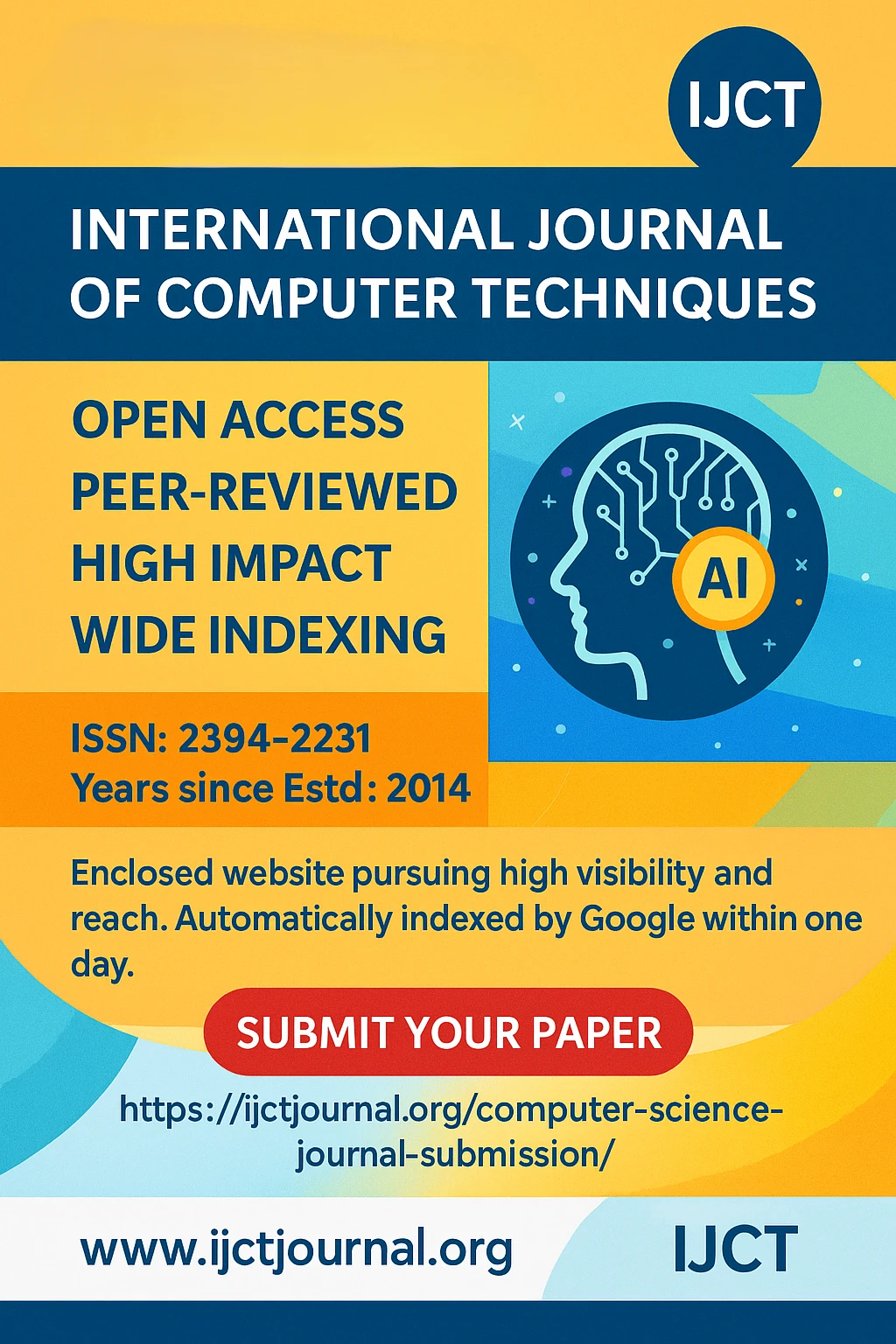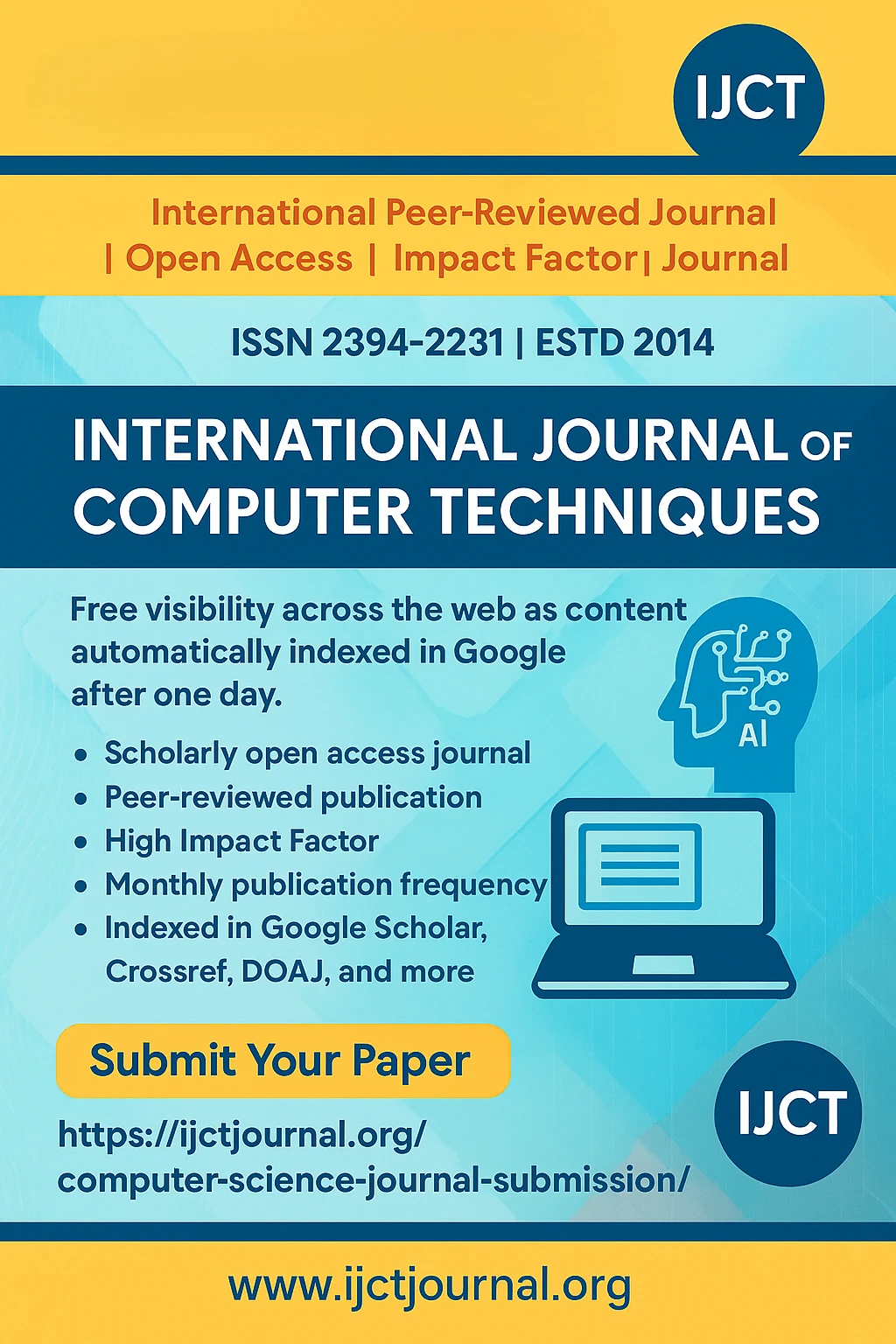
MindLink – A Study Focused Website | IJCT Volume 12 – Issue 5 | IJCT-V12I5P82

International Journal of Computer Techniques
ISSN 2394-2231
Volume 12, Issue 5 | Published: September – October 2025
Author
Dr. K. Sundara Velrani , Janani S ,
Kavin K , Kishore C
Table of Contents
ToggleAbstract
As an anonymous, web-based interactive platform, MindLink aims to facilitate collaborative learning among school pupils through question-and-answer interactions. Students ask academic questions and retain their anonymity by using advice nickname, automatically generated by the application, so they can be free from fear complexity opening up more communicative in their environment. Classmates and teachers can respond, and in addition, teachers can add study notes like notes, PDFs, PPTs, and documents. In addition to productivity and educational purposes, MindLink features a “focus timer” to facilitate attention and a “Relax Room” with healing music for mental health purposes. Teachers can run quizzes on the systems, and students are automatically given badges, scores, and a rank based on frequency of students’ interactions and engagement. The advanced protection and monitoring features of MindLink allows for reporting and moderation systems for safety and accountability purposes, should there be inappropriate content on the part of users that is noted somewhere and needs to be addressed by the staff. Built with Vite + React on the frontend, Node.js + Express on the backend, and MongoDB for database management monitoring. MindLink affords a safe, measured, responsive, and interactive experience where online learning can become fun and productive for students.
Conclusion
The conceptualized MindLink platform was designed and integrated especially for the purposes of facilitating online learning among school students through the amalgamation of educational interaction, concentration management, and relaxation under one system. The system successfully addressed the problem of hesitation on the part of students to pose questions openly with the adoption of an anonymous question-and-answer system. In this way, the system promoted free discussion and engagement without fear of being judged. Teachers were able to upload notes, give quizzes, and regulate student interactions easily, while administrators ensured that the site was moderated and safe. The global performance and usability test showed that the system achieved stability, responsiveness, and high user satisfaction. Usability testing among students and instructors produced an SUS score of 84, a high user experience measure. Performance testing showed quick API response times and consistent performance with concurrent users. The three-tier architecture, which was constructed using Vite, React, Node.js, Express, and MongoDB, allowed for modularity, scalability, and smooth data handling.
References
[1] É. Lavoué, B. Monterrat, M. Desmarais and S. George, “Adaptive Gamification for Learning Environments,” IEEE Transactions on Learning Technologies, vol. 12, no. 1, pp. 16–28, Jan. 2019.
(IEEE Xplore) [2] Y. Maher, S. M. Moussa and M. E. Khalifa, “Learners on Focus: Visualizing Analytics Through an Integrated Model for Learning Analytics in Adaptive Gamified E-Learning,” IEEE Access, vol. 8, pp. 197597–197616, 2020, doi: 10.1109/ACCESS.2020.3034284.
(IEEE Xplore) [3] A. Moubayed, M. N. Injadat, A. Bou Nassif, H. Lutfiyya and A. Shami, “E-Learning: Challenges and Research Opportunities Using Machine Learning & Data Analytics,” IEEE Access, vol. 6, pp. 19275–19290, 2018, doi: 10.1109/ACCESS.2018.2851790.
(IEEE Xplore) [4] S. Reyssier, S. Hallifax, A. Serna, J.-C. Marty, S. Simonian and É. Lavoué, “The Impact of Game Elements on Learner Motivation: Influence of Initial Motivation and Player Profile,” IEEE Transactions on Learning Technologies, vol. 15, no. 1, pp. 42–54, 2022.
(IEEE Xplore) [5] M. M. Santoni, T. Basaruddin, K. Junus and O. Lawanto, “Automatic Detection of Students’ Engagement During Online Learning: A Bagging Ensemble Deep Learning Approach,” IEEE Access, 2024, doi: 10.1109/ACCESS.2024.3425820.
(IEEE Xplore) [6] K. Mangaroska, B. Vesin, V. Kostakos, P. Brusilovsky and M. N. Giannakos, “Architecting analytics across multiple e-learning systems to enhance learning design,” IEEE Transactions on Learning Technologies, vol. 14, no. 2, pp. 173–188, 2021, doi: 10.1109/TLT.2021.3072159.
(IEEE Xplore) [7] B. M. Booth, N. Bosch and S. K. D’Mello, “Engagement Detection and Its Applications in Learning,” Proceedings of the IEEE, vol. 111, no. 10, pp. 1396–1416, Oct. 2023, doi: 10.1109/JPROC.2023.3309560.
(IEEE / highly relevant review) [8] J. Hamari and J. Koivisto, “Why do people use gamification services? A review of empirical studies on gamification,” International Journal
[9]of Information Management, vol. 35, no. 4, pp. 419–431, 2015. doi: 10.1016/j.ijinfomgt.2015.04.006.
(Highly cited; good for gamification theory — not IEEE but widely used in IEEE papers) [10] N. Ahmad and R. Khan, “A secure and scalable cloud-based architecture for online education platforms,” IEEE Access, vol. 8, pp. 147–156, 2020.
(IEEE Xplore — architecture & security relevance) [11] H. B. Lee and J. Kim, “Design and evaluation of web-based platforms for interactive learning,” IEEE Transactions on Learning Technologies, vol. 13, no. 3, pp. 564–573, 2020.
(IEEE Xplore)
Journal Covers
IJCT Important Links
© 2025 International Journal of Computer Techniques (IJCT).











